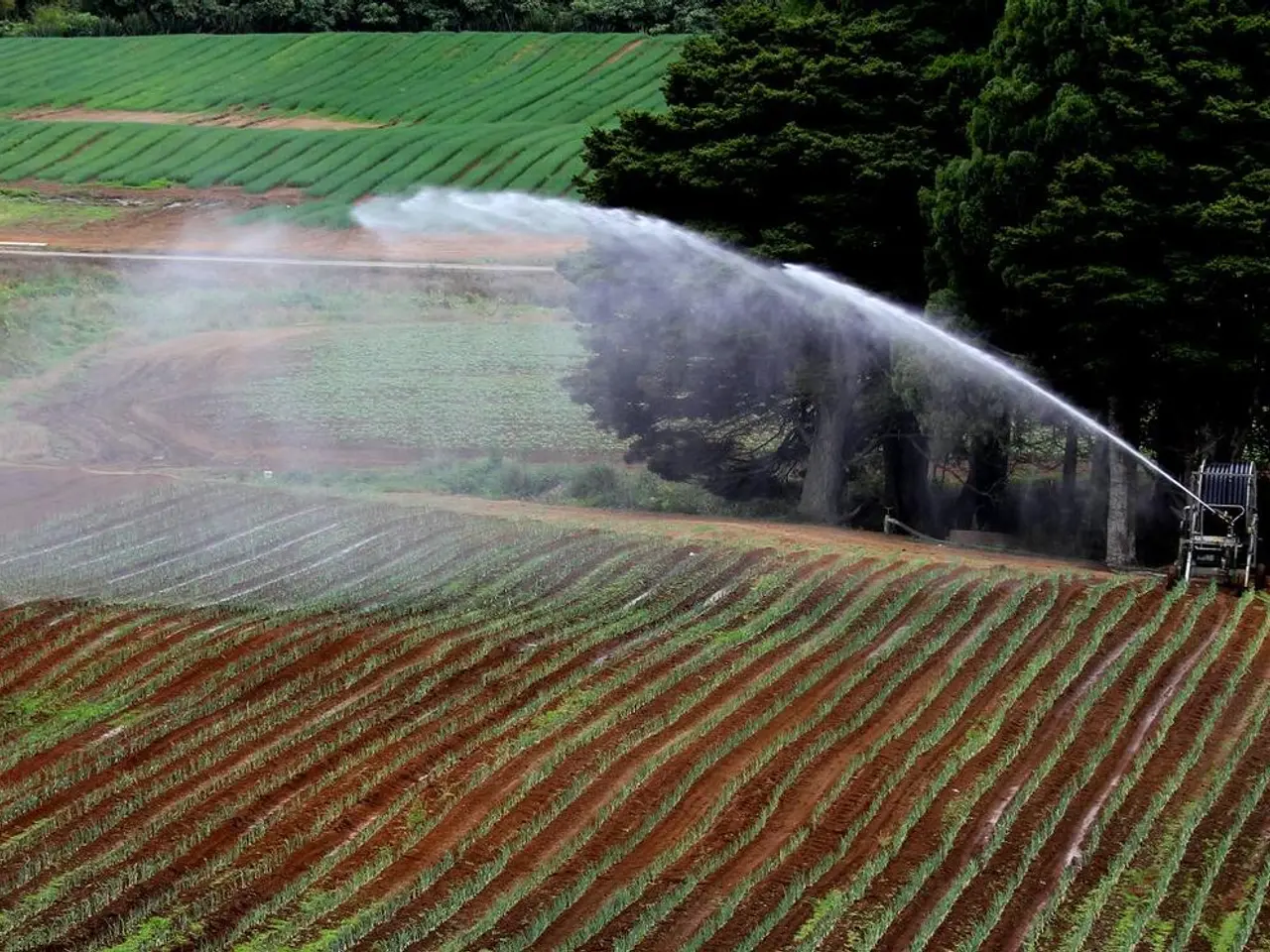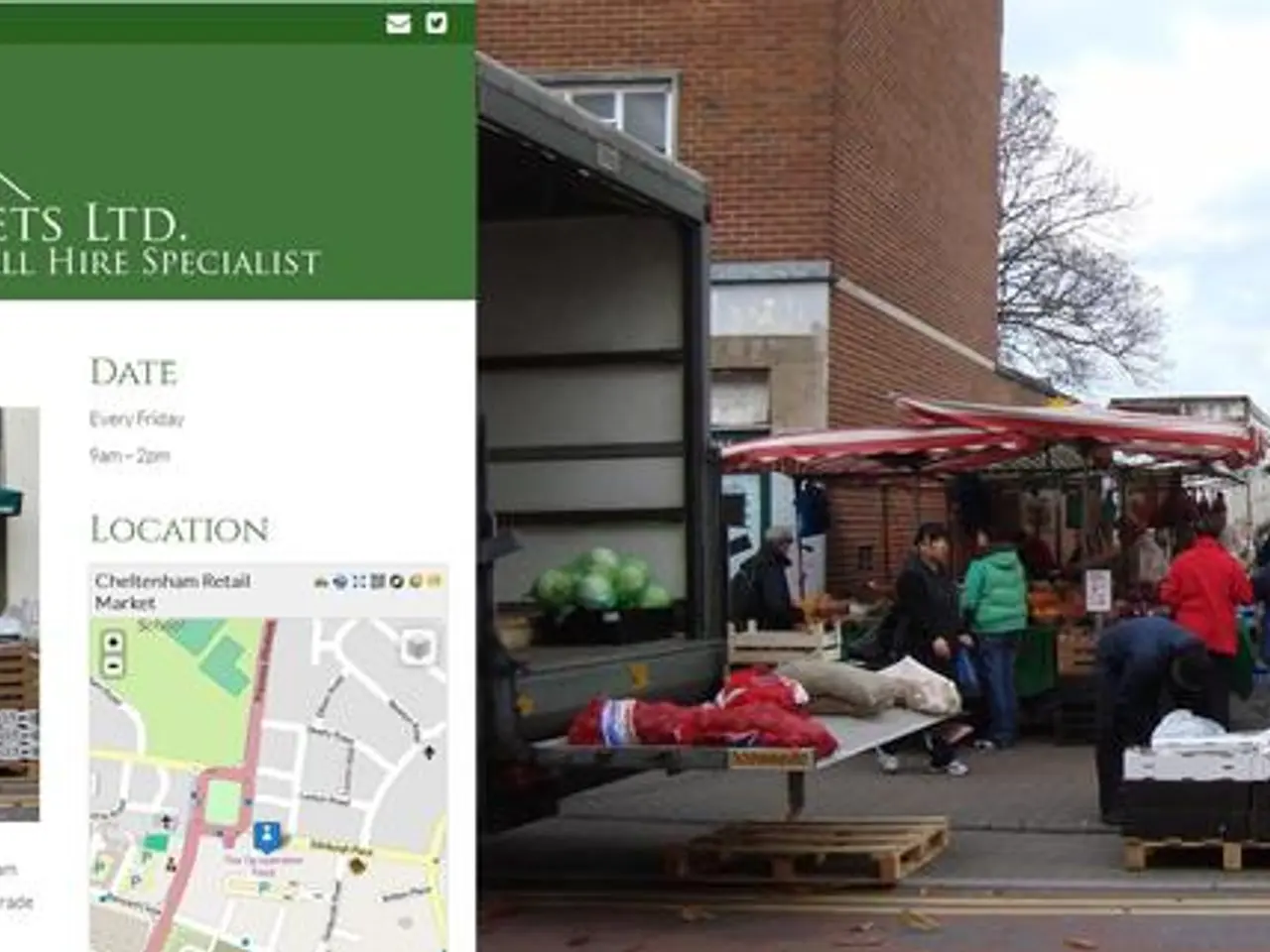Family Snapshot: Multi-Generational Farming across the Philippines
In the small village of Laguilayan, nestled on the southern archipelago of Mindanao, rice cultivation remains a labor-intensive, traditional practice. Here, the Hamza family's farms have been passed down over four generations, and industrialized farming has yet to reach this remote corner of the Philippines [1].
Rice, a staple food for most Filipinos across the country, is not only a basic necessity but also a highly political commodity. The Philippine rice sector has been the focus of the government's agricultural policies, with a focus on promoting rice self-sufficiency and providing high incomes to farmers while keeping prices affordable for consumers [6].
However, climate change is posing significant challenges to rice production in the Philippines. Unpredictable weather patterns, such as typhoons, droughts, floods, and erratic rainfall, are causing crop failures and damaging infrastructure [1][3]. In 2024, typhoons devastated rice farming in major regions like Central Luzon and Eastern Visayas, while seasonal droughts, like those expected from El Niño effects in 2025, threaten to halve productivity for rain-fed rice farms [1].
These weather disturbances lead to economic hardships for farmers. Reduced yields and damaged infrastructure increase food price volatility and food insecurity on a national scale, while farmers face higher risks of income loss and poverty. The increased frequency of weather shocks destabilizes farming livelihoods, forcing farmers to deal with inconsistent production outputs and added costs for adaptive measures [1][4].
The economic stresses translate into anxiety, uncertainty, and distress among farmers. While detailed emotional accounts may not be readily available, it is widely recognized that such recurrent losses and unpredictability challenge farmers’ mental well-being due to financial insecurity and the threat to their traditional way of life [5].
Programs promoting climate-resilient practices, such as alternate wetting and drying (AWD) techniques, aim to lessen these stresses by improving water use efficiency and reducing greenhouse gas emissions, potentially stabilizing yields and incomes [3].
Despite these challenges, the spirit of community remains strong. During the harvest, families come together to work the land, with many more people needed for the labor-intensive process. Men and women use a karit, a type of sickle, to cut the long grass. The grain, still in its husk, is collected in sacks, and the grass is piled up to be burned [2].
Photographer Sharif Hamza, born and raised in London and currently living in New York, captures the cinematic beauty of this traditional harvest in his work. His six-year-old daughter has been asking questions about where food comes from and the effects of climate change on food production, highlighting the importance of raising awareness about these issues [7].
As the 9th largest rice producer in the world, accounting for 2.8% of global rice production, the Philippines plays a significant role in global food security. The urgency of integrated strategies to support Philippine rice farmers both economically and emotionally amid worsening climate challenges cannot be overstated [5]. Agricultural development is a powerful tool to end extreme poverty and boost shared prosperity in the Philippines [4].
Sources:
[1] Climate change impacts on rice production in the Philippines: an overview. (2019). Retrieved from https://www.researchgate.net/publication/333698655_Climate_change_impacts_on_rice_production_in_the_Philippines_An_overview
[2] Hamza, S. (2022). Rice harvest in the Philippines. Retrieved from https://www.sharifhamzaphotography.com/gallery/rice-harvest-in-the-philippines
[3] Climate-smart agriculture and climate resilience in the Philippines. (2018). Retrieved from https://www.researchgate.net/publication/326703736_Climate-smart_agriculture_and_climate_resilience_in_the_Philippines
[4] Agricultural development as a tool to end extreme poverty and boost shared prosperity in the Philippines. (2016). Retrieved from https://www.worldbank.org/en/country/philippines/publication/agricultural-development-as-a-tool-to-end-extreme-poverty-and-boost-shared-prosperity-in-the-philippines
[5] Mental health and well-being of smallholder farmers in the Philippines: A review. (2021). Retrieved from https://www.researchgate.net/publication/352048109_Mental_health_and_well-being_of_smallholder_farmers_in_the_Philippines_A_review
[6] The Philippine Rice Industry: An Overview. (2019). Retrieved from https://www.researchgate.net/publication/332681903_The_Philippine_Rice_Industry_An_Overview
[7] Climate change and its effects on food production: A conversation with Sharif Hamza. (2022). Retrieved from https://www.sharifhamzaphotography.com/blog/climate-change-and-its-effects-on-food-production-a-conversation-with-sharif-hamza
- The Hamza family's farm, located in the remote village of Laguilayan, is a part of a community that continues traditional rice cultivation practices.
- Despite the focus on rice self-sufficiency in the Philippine government's agricultural policies, climate change presents significant challenges to rice production.
- Climate-resilient practices such as alternate wetting and drying techniques are being promoted to minimize the effects of climate change on rice farming and improve water use efficiency.
- The global cuisines that use rice as a staple food, including Filipino cuisine, could be impacted by these challenges to rice production occurring in the Philippines.
- The Hamza family's traditional rice harvest is part of a cultural practice that brings the community together during the labor-intensive process.
- As one of the world's largest rice producers, the Philippines plays a critical role in global food security, and the importance of climate change mitigation strategies in the rice sector cannot be overstated.




